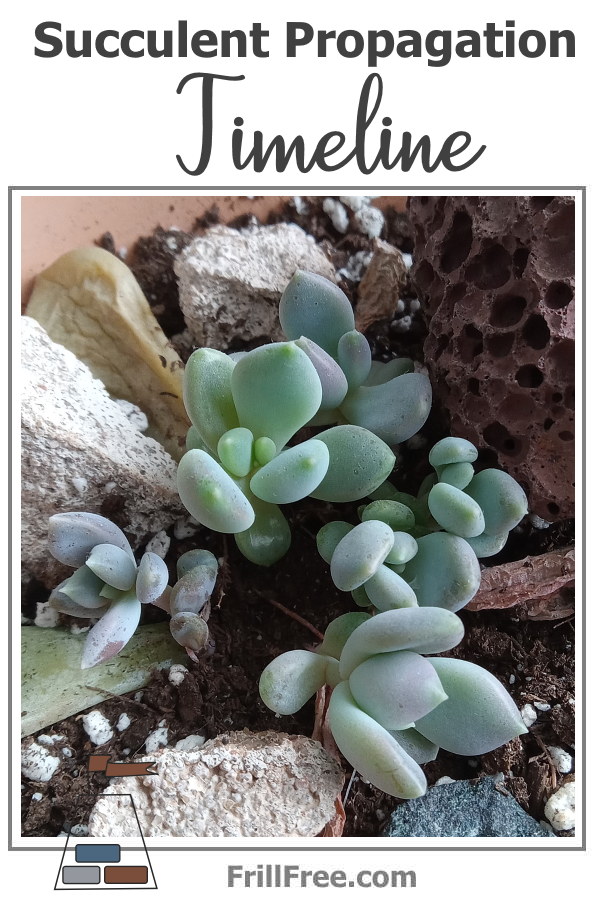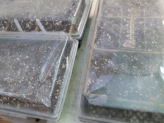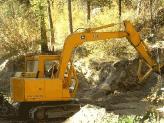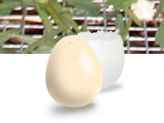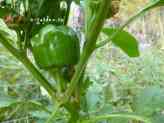- Homesteading
- Growing Ornamental Plants
- Succulent Propagation Timeline
Succulent Propagation Timeline
What Happens Under The Cover Of Soil
The family of succulent plants are some of the easiest to grow, but sometimes they are tricky. This Succulent Propagation Timeline will give you an idea of what's happening under the soil where you can't see what's going on.
If you've grown succulents for a while, you may have got the propagation bug. They are some of the easiest and most fun plants to propagate, so it's one of those insidious obsessions that will start with a simple leaf, falling to the surface of the soil.
One day, you notice that it's grown roots and a little clump of baby plants is actually living at the end of the leaf.
Then you start to pull the leaves off, but that's a different story.
The process of the tiny plants emerging can take a few days, or several months, depending on the type of plant, the amount of light it's receiving, and temperature, moisture levels and so on, some of which you have no control over.
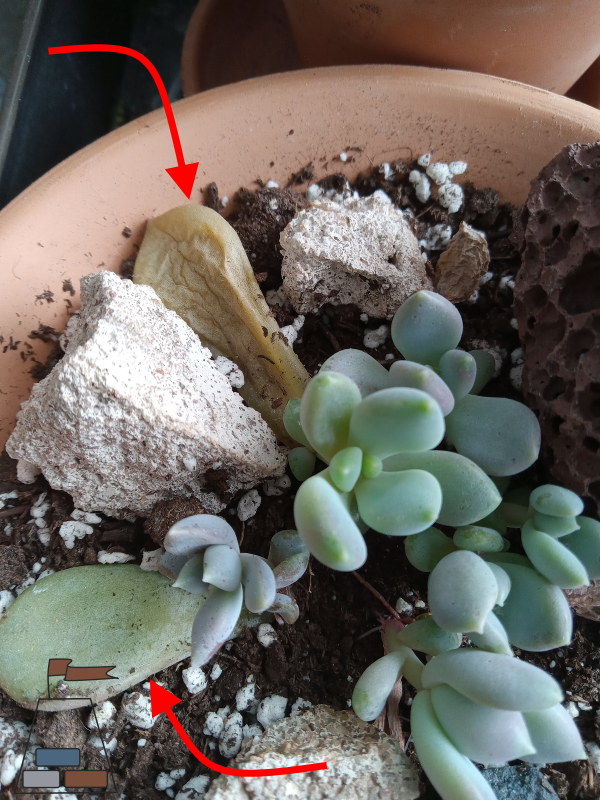
Say, for instance, you live in a very humid warm climate. You will find the risk of the leaf rotting before it roots to be very real.
The only way around this is to reduce the amount you water it, and keep the soil very dry. The soil itself has to be well drained, and hopefully absorb any moisture from the air, rather than the watering can.
If you're propagating something like Echeveria species, or their hybrids (Sedeveria, Pachyveria and the like) like the example here you will have a different timeline than with Aloe or similar plants.
All require dry soil, but they are all going to vary with the size of the propagule (the part you're propagating) as well as the age of the growth, among other things.
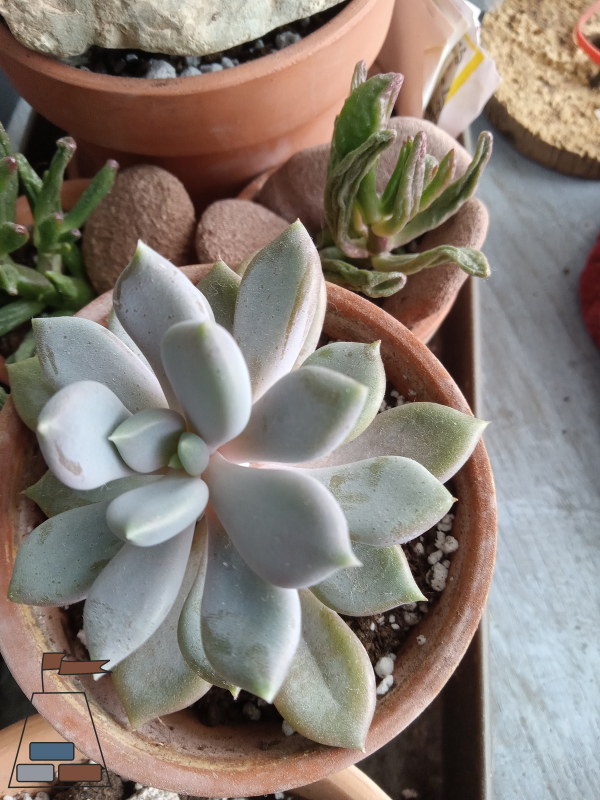 The original plant, showing new growth
The original plant, showing new growthUsing the process of beheading, or taking off the top rosette and rooting it, you can get a whole new, lovely plant in double quick time, like a few weeks. The stem that remains will produce a whole lot of tiny plants that you can cut off and root, in time.
Here is an approximate timeline of an Echeveria leaf;
The leaf falls or is twisted off the plant.
The leaf is left to dry out, for up to a week. This is one of the most important parts of this whole process. Not doing this can make it a pointless exercise, as the leaf might just rot instead of root.
Placed on dry soil mix, with a high percentage of gravel or pumice, this can take several weeks to show signs of growth.
First, the tiny pink or white roots will emerge, and start seeking out the soil. If you happen to see this, or tug gently on the leaf to see if it's rooted, you can now start to drop a few tiny dribbles of water close to the leaf, but not on it. This encourages the roots to seek out the moisture.
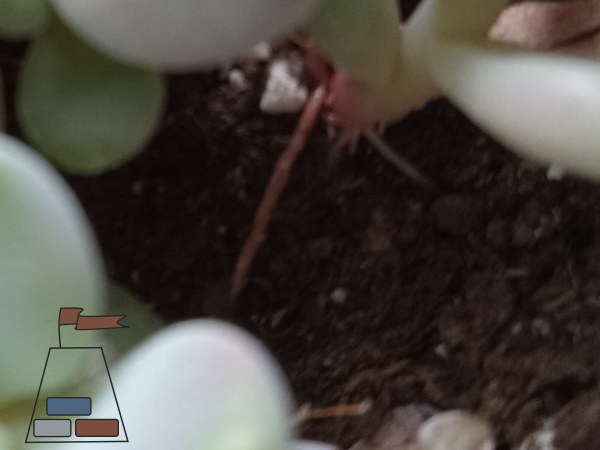 Tiny pink roots emerge at all angles to anchor the new baby plant
Tiny pink roots emerge at all angles to anchor the new baby plantThen it's a matter of maintenance. Once the mother leaf shrivels and dries out, which takes up to six months, you can then start to pick apart the baby plants.
Often, there are three or four, or up to ten, tiny plants. Pulling them apart seems rough, but they will grow better when they have less competition. This will take months again, for each infant plant to reach the size to fit into a one or two inch pot.
Use a toothpick to tease them apart, very carefully. They will replace any roots that are damaged, but to give them the best chance, try not to disturb them too much.
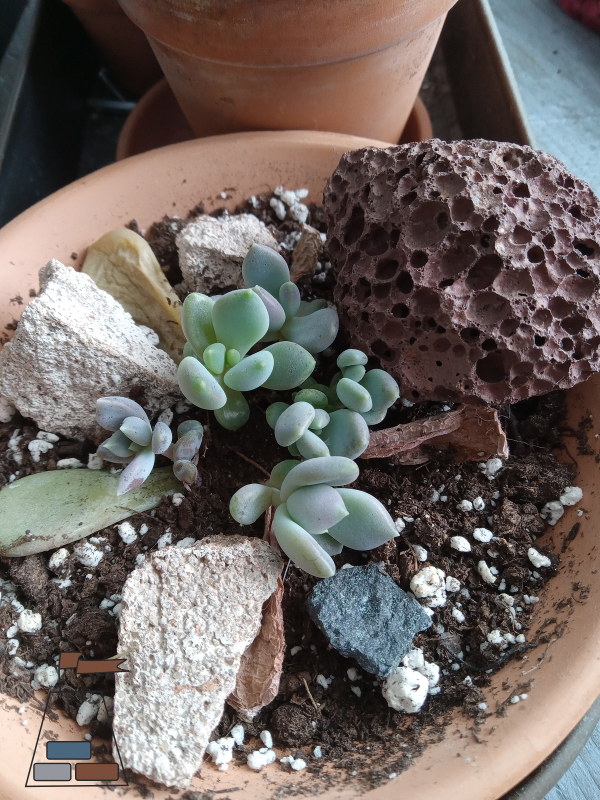
Use terracotta clay pots, the roots are much happier in those. They hit the sides of the pot, and the rough surface encourages the roots to split and go in many different directions.
Eventually, you will have many plants to share with friends, plant for your own enjoyment in summer patio pots, or even start a business. This is how many of us got our start.
